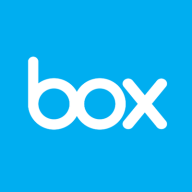


Find out what your peers are saying about Microsoft, OpenText, IBM and others in Enterprise Content Management.



Box is a Modern Content Management Platform for companies of all sizes and industries. The difference that Box brings is that it offers the security and controls admins need with the sharing and collaboration capabilities end users want. Box has made it easier for people to securely share ideas, collaborate and get work done faster. Today, more than 62,000 businesses, including 59% of the Fortune 500, trust Box to manage content in the cloud.
The Box platform provides HIPAA, FINRA, FedRAMP, and many other compliances to go with granular access permissions and advanced security capabilities.
By using Box you can sync, share, and collaborate on all types of files, anywhere, on any device - but that's just the beginning. You can choose where to store your data, to manage your own encryption keys, and set workflows to automate content-based processes. You can also assign custom metadata tags to content, watermark sensitive content, and set file retention or legal hold policies.
Box has deep, native integrations with Microsoft Office and Outlook, Google Apps for Work, Salesforce, Netsuite, Docusign, Adobe, and many other best-of-breed solutions you may already be using.
Microsoft OneDrive for Business gives you online storage that works seamlessly with the tools you use every day to create, communicate, and collaborate from your PC/Mac or your iOS, Android, or Windows device.
SharePoint is a Microsoft-based platform for building web applications. It covers a widerange of capabilities and while it is appropriate for experienced webdevelopers, even non-technical minded users can easily navigate through thesystem and execute functions such as collaborating data, managing documents andfiles, creating websites, managing social networking solutions, and automatingworkflow.
Major areas that SharePoint deals with are websites,communities, content, search, insights, and composites. The purpose is to give usersthe ability to create or develop these key business components on their owneven without technical knowledge of, for example, how to build a website or howto integrate coding. Configuring SharePoint into a business's system is meantto cut out all of the complicated steps, and pave the way for easierimplementation all around.